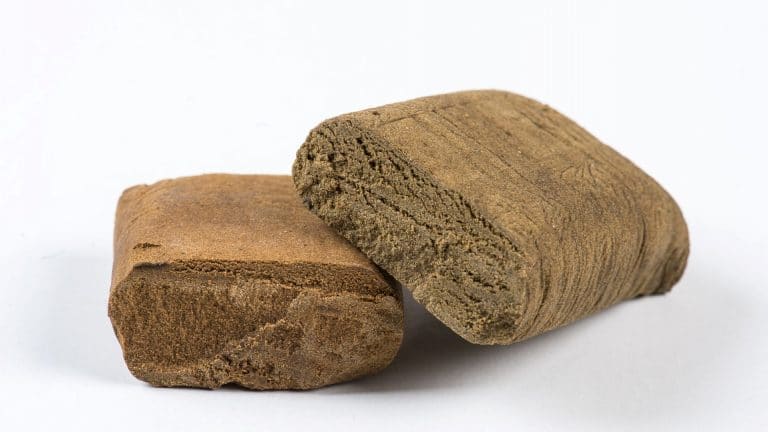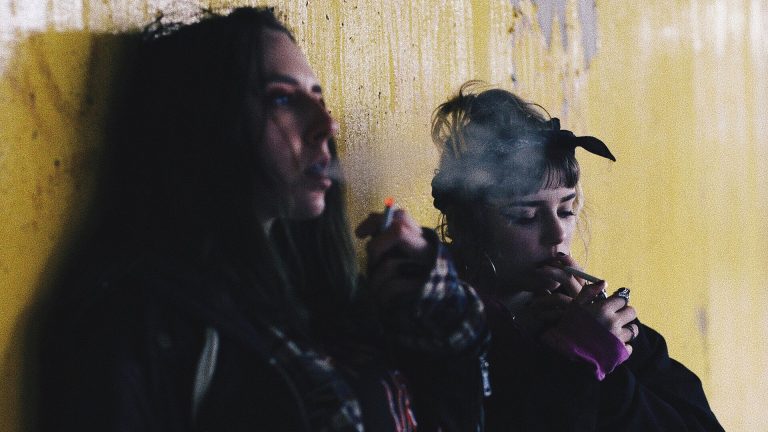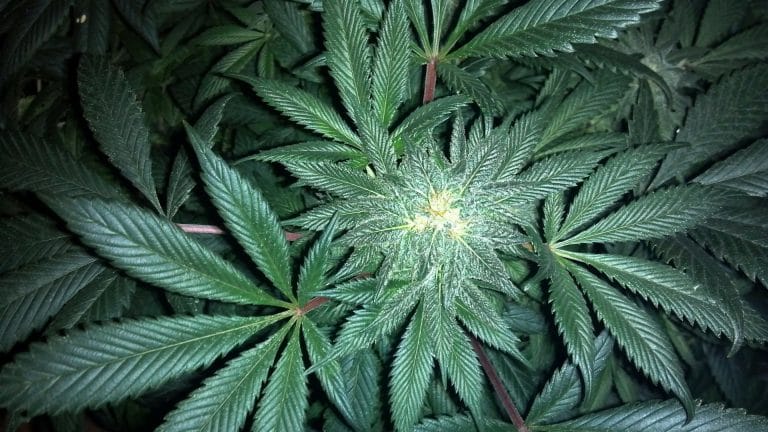40 Formidable Phobia Statistics & Facts (2024 Edition)

Phobias belong to the class of mental disorders known as anxiety disorders. Phobia statistics show that they are rather common, especially among women. Far from being just irrational fears, they are complex conditions with significant consequences on the everyday life dynamics for the sufferers.
Every one of us is at risk of developing a phobia; though some more than others. But, if you do develop one, what would you do? Fight or flight? Most certainly not flight if you are aviophobic!
So, without further ado, here are some interesting stats and facts regarding phobias that might help you overcome your fears once and for all (COVID19 fears included).
10 Facts & Phobia Statistics for 2024
- Some of the strangest phobias are fear of garlic, fear of long words, and fear of stars.
- The percent of the US population with specific phobias is 8.7%.
- 30% of Britons are afraid of meeting people due to post-lockdown anxiety.
- 33%–40% of the general population experience anxiety related to flying.
- Fear of failure is prevalent among 33% of Americans.
- 77% of Americans are afraid of public speaking.
- More than 75% of adults suffer from dental fear or anxiety.
- 48% of Americans felt anxious about getting infected by coronavirus.
- Exposure therapy is the best treatment for specific phobias.
- People with SAD are 7 times more likely to use cannabis regularly.
4 Basic Facts About Phobias
What causes phobias, and how can you recognize the symptoms?
1. Phobias can be divided into four categories.
(The Recovery Village)
The main categories include the natural environment, animals, situations, and medical treatment. When it comes to natural environment phobias, the most common ones are fear of the dark (achluophobia) and fear of heights (acrophobia).
Animal phobias can include fear of insects (entomophobia) and fear of mice (musophobia). Situational phobias, as the name suggests, are linked to a specific situation. Phobia facts state fear of flying (aerophobia) and fear of closed spaces (claustrophobia) are the most common phobias in this group. In contrast, the most common medical phobias are fear of blood (hemophobia) and fear of needles (trypanophobia).
2. Interesting facts about phobias report some of the strangest phobias are fear of stars, fear of long words, and fear of phobias.
(The Healthy)
The list of unusual phobias is so extensive that we’ll mention only a few of them, starting with aulophobia (the fear of flutes) and kinemortophobia (fear of zombies).
Then, there are symmetrophobia (fear of symmetry), ablutophobia (fear of bathing), and perhaps the most unusual one, arachibutyrophobia. People who have this phobia are scared that the peanut butter will stick to the roof of their mouth.
3. The main causes of phobias can be traumas, stress, genetics, learned responses, and responses to fear.
(Mind.org)
Various factors can cause phobias. They can be hereditary (some children are born with phobia tendency) or a result of a traumatic childhood event that can develop into phobia later in life. Moreover, phobias can be a result of high levels of stress and learned responses. The family environment also plays a significant role, and it can have a considerable effect. Children can develop the same phobia as their parents or siblings (although it’s not a rule).
4.The most common symptoms of phobia include fear, sweating, and chest pain.
(Mind.org)
Not everyone will feel the same intensity of the symptoms. However, most will feel some of the following physical symptoms: palpitations, dizziness, shaking, diarrhea, nausea, shortness of breath, etc. Psychological symptoms are also common, particularly the fear of dying, fainting, and losing control.
Stats & Fun Facts About Phobias
How many people experience phobias, and which phobias are most prevalent?
5. 1.7% of the general population suffers from agoraphobia.
(NCBI) (CFPsych)
Agoraphobia, or fear of open spaces, fear of crowds, and fear of becoming overwhelmed, could be on the rise in the coronavirus aftermath. The lockdown had affected people who were already at risk of developing this phobia, while many others could have developed agoraphobia due to the “stay at home” measures.
People who have an agoraphobic relative, that are under 35, and people with other anxiety disorders are at higher risk of developing this phobia.
6. The percent of the population with phobias in the US is 8.7%.
(ADAA)
Specific phobias are fears of specific objects or situations that are usually harmless and not life-threatening. Among the many types of phobias, the most common specific phobias include fear of animals (dogs, snakes), situations (flying), natural environments (storm), blood, etc. That said, about 19 million adult Americans suffer from specific phobias.
7. Phobia statistics for the UK note 10 million Britons have some type of phobia.
(NHSinform) (Oakwood Theme Park)
Google Search Data reports show that trypophobia (fear of small holes and bumps), agoraphobia (fear of open spaces), hypochondria (fear of getting sick), claustrophobia (fear of closed spaces), and domatophobia (fear of houses or being inside one) were the most searched phobias among the British.
Similarly, thalassophobia (fear of deep water) has witnessed an increase of 311.7% in Google searches since 2016.
8. Phobia statistics recognized five new phobias.
(Times of India)
Five new phobias were diagnosed in 2019, which included:
- eco-anxiety (global warming-related panic attacks, prevalent among the younger generation),
- nomophobia (fear of forgetting your phone),
- food neophobia (fear of eating new food),
- carbophobia (fear of eating carbohydrate-rich food), and
- editiovultaphobia (fear of being judged on social media).
9. 22% of Google searches on fears included anthropophobia (fear of other people), making it the most googled phobia among Americans in 2020.
(New York Post)
The number of google searches on fear statistics and phobias witnessed significant growth since the start of the global pandemic. Thus, anthropophobia, or fear of other people, became the most googled word in the US. In the same respect, Florida citizens were obsessed with fear of germs.
In sharp contrast, the most googled fear among New Yorkers was philophobia or fear of falling in love.
10. 30% of Britons are experiencing FOGO (fear of going out and meeting people) due to post-lockdown anxiety, statistics on fears indicate.
(TopDoctors)
Coronavirus might have created a new phobia—fear of going out, aka FOGO. The uncertainty about the situation with the virus made people more anxious about getting back to work and meeting with friends. What’s more, 67% of Britons reported feeling nervous about loosening coronavirus restrictions.
11. Coronavirus phobia is very present in India as 62% of Indians were afraid of getting infected with the coronavirus.
(Mint)
Compared to most Western countries, COVID19 phobia rates were higher in India, although even higher covid fear rates were reported in other Asian countries. The fear of getting infected was highest among millennials, with women leading by 5%.
12. 33%–40% of the general population experience anxiety related to flying (aviophobia).
(Stratos)
Aviophobia is not the same as acrophobia. Acrophobia definition cites extreme fear of heights, while aviophobia is fear of flying. Whereas 60% of people usually manage to deal with flight anxiety, fear of flying statistics implies that 2.5%–5% of people can’t imagine going on a plane without feeling extreme clinical anxiety.
13. Phobophobia (fear of phobias) can lead to developing more phobias.
(Verywell Mind)
Phobophobia or the fear of fear is often perceived as the reason behind the idiomatic anxiety disorders with occasional panic attacks. People who already suffer from some type of phobia have a higher chance of developing phobophobia. That said, based on phobophobia statistics, it’s not impossible to develop it even if there were no prior phobias.
14. Fear of failure is prevalent among 33% of Americans.
(Entrepreneur) (Choosing Therapy)
Atychiphobia holds back 33% of Americans from opening a business. Although this is not an official diagnosable mental disorder, it is a term linked to emotions and actions that often stop people from finishing their tasks and ideas, fear of failure statistics imply.
This fear can trigger emotions like guilt, embarrassment, disappointment, shame, etc. With that in mind, fear of failure is quite common among entrepreneurs.
15. What is the name given to the phobia fear of being embarrassed? Gelotophobia.
(Psychology Today)
Gelotophobia is the fear of being embarrassed or laughed at in social interactions. Various research shows that people who have this phobia more often have problems developing close relationships. Consequently, they tend to feel more lonely than the average population.
16. 11% of adult Americans were extremely scared of death in 2019.
(Statista) (Statista)
Compared to 25% who reported not being afraid of dying at all. Judging by the fear of death statistics in another survey, 49% believed cancer is the most unpleasant way to die, followed by dementia and Parkinson’s disease (30%), and terrorist attack (29%). Drowning/fire/falling also had high rates (26%).
17. Video game-like therapy (VRET) is used in the treatment of various phobias.
(SMPG)
Phobias can be treated by a psychiatric aid called Virtual Reality Exposure Therapy, or VRET. VRET basically puts people in a digitally created world where it exposes them to various fearful and stressful situations. Statistics about fear show that VRET can treat numerous phobias, from fear of flying to fear of public speaking.
For example, people who are afraid of public speaking will be exposed to formal interview situations, small and large audiences, positive and negative responses, etc.
18. 77% of Americans feel anxious about public speaking.
(Orai)
Glossophobia or fear of public speaking is not a specific, individual phobia but a form of social anxiety disorder or social phobia. Public speaking fears statistics state that 89.4% of people who have been diagnosed with social anxiety disorder have a fear of speaking in public. On top of that, only 8% of people will ask for help. The most common glossophobia symptoms are panic attacks before public speaking, stress, anxiety, crying, freezing, etc.
19. About 2.2% of the global population suffers from claustrophobia.
(The Recovery Village)
As one of the most common phobias, claustrophobia, aka fear of closed spaces, usually starts during adolescence, and it’s more frequent among women. It can develop as a result of a trauma linked to small spaces or feeling trapped. Claustrophobic people often avoid elevators, windowless rooms, tents, MRI scans, etc.
20. Social phobia is prevalent among 13% of people.
(MSD Manual)
Social phobia is linked to fear of being exposed to specific social situations that could result in embarrassment and humiliation. People that have this phobia believe they will not be able to meet people’s expectations. Based on social phobia statistics, approximately 9% of women and 7% of men will experience this phobia within a year. Public speakers, musicians, and actors are naturally more likely to experience social phobia during their life.
21. Hypochondria is not a phobia any more, but an anxiety disorder.
(Verywell Mind)
New hypochondriasis or hypochondria classification has completely removed the disorder from the list of phobias. The research suggests it shares a lot of symptoms with anxiety disorders. Hence, it was reclassified as an illness anxiety disorder (IAD). The phobia definition includes the notion of irrationality, and this makes all the difference between the two conditions, as the analysis of the specific phobia statistics show..
22. 64.4% of people start climbing to overcome their fear of heights.
(ClimbingBlogger)
Based on one survey, people under 18 are less likely to experience acrophobia or fear of heights than people between 25–34 who experience this fear more frequently. On a related note, these acrophobia statistics show that men are 6% more scared of heights than women.
23. More than 75% of adults suffer from dental fear or anxiety.
(Statistic Stats)
Many adults are afraid of going to the dentists due to the pain it can cause. Furthermore, 5%–10% of people have dental phobia, aka extreme fear of dentists. 30% of dental students also report suffering from dental anxiety.
COVID19 and Phobia Statistics in America
What was the impact of the global pandemic on Americans and their mental health?
24. 48% of Americans felt anxious about getting infected by coronavirus.
(Psychiatry.org)
While 4 in 10 Americans felt anxious about getting ill or dying from the virus, 62% were more worried about their loved ones’ health.
On a similar note, the biggest fears statistics show 36% of Americans believed that the global pandemic left a significant impact on their psychological health. 59% reported it had a considerable influence on their everyday routine too.
25. 34 in 100 American adults show symptoms of depression, anxiety, or both, owing to the coronavirus pandemic.
(Washington Post)
Based on the Census Bureau data, 24% of adult Americans showed symptoms of MDD (major depressive disorder), while 30% showed symptoms of GAD (generalized anxiety disorder) due to coronavirus. The rates were highest in Mississippi (48%) and lowest in Hawaii.
26. Covid facts vs fear: 80% of covid infections are mild or asymptomatic.
(Singing River Health System)
There are numerous fears related to the new virus. While some of them are justified, others are mostly speculations. E.g., coronavirus is not the deadliest virus globally and will not wipe out the population.
Stats & Facts on Phobia Treatment
How can phobias be treated and can CBD be of help?
27. Exposure therapy and cognitive behavioral therapy are said to be the best treatments for specific phobias.
(Mayo Clinic)
Exposure therapy is related to changing the responses towards the fear, whether it’s an object or a situation. It works by exposing people to the object of their fear through gradual repetition.
In addition to exposure therapy, cognitive-behavioral therapy (CBT) can also be very effective in phobia treatments. It includes exposure to the object of fear + other techniques that will help cope with the fear.
28. Phobia statistics worldwide show that treating phobias with medication can provide short-term relief.
(NHS)
Medications are the last resort for treating phobias because they offer only short-term relief. Antidepressants are prescribed for anxiety, panic disorder, and social phobia; tranquilizers for severe anxiety, while beta-blockers help with anxiety symptoms (e.g., palpitations).
29. Alternative ways of treatment include hypnotherapy, homeopathy, and herbal remedies.
(Verywell Mind)
Statistics on phobia treatments often mention these three alternative ways of dealing with fears and anxiety. So, how do they work? Hypnotherapy is a technique that uses hypnosis to treat various conditions like pain, anxiety, and phobias. Its goal is to help the patient focus on the problem by visualizing it.
Homeopathic therapy includes extremely small quantities of toxic substances, while herbal remedies may include chamomile, ginseng, and valerian root. Keep in mind that the efficacy of these alternative therapies is not 100% guaranteed.
3 Common Myths About Phobias
Here are some of the most common misconceptions linked to phobias.
30. People who suffer from some type of phobia are insane.
(Verywell Mind)
This is one of the most common misconceptions about phobias. In reality, people with phobias are not to be defined as insane or ”crazy”. They simply feel high levels of anxiety related to a certain object or situation.
31. If parents have phobias, so will their children.
(Verywell Mind)
Phobia statistics show children are indeed at a higher risk of developing a phobia if their parents have one, but this is not set in stone. They do not have to develop a fear if one of the parents has it.
32. Phobias cannot be overcome.
(The Recovery Village)
Many people can recover from this condition by learning how to control their fear. In addition to that, various helpful treatments have been proven useful in treating phobias, like CBT and exposure therapy.
8 Stats on Phobias, CBD, and Cannabis
Is marijuana for phobia any good?
33. People with SAD (social anxiety disorder) are seven times more likely to use cannabis regularly.
(NCBI) (NCBI)
A study shows that adolescents with SAD had greater cravings for marijuana, using weed for phobia cure and as a coping mechanism. SAD had a greater prevalence among solitary cannabis users as noted in the phobia statistics. Smoking marijuana attenuated phobia-related social avoidance and induced sociability.
34. Weed and social phobia are closely interlinked since THC promotes isolation and CBD induces friendliness.
(NCBI)
A recent animal study describes the opposite effects that THC and CBD have on social interaction in mice. While THC induced anxiety-like behavior and isolation, CBD when introduced prior to, or after, THC, countered this effect.
35. Repeated CBD administration has anxiolytic effects on late teenagers with SAD.
(Frontiers in Psychology)
A public speaking phobia is a specific phobia in people with SAD that provokes cognitive impairment and extreme discomfort. In a study that included simulated public speaking, 600 mg of CBD was administered to the SAD subjects (Japanese adolescents) with undisputable positive effects. CBD reduced anxiety symptoms, increased cognitive performance, and eased any discomforts.
A clinically proven increase in brain activity in the right cortex (emotional regulation) is believed to be the reason behind this therapeutic effect.
36. CBD prevents the anxiogenic effects of long-term stress.
(Hindawi.com)
Medical research about phobia statistics using animal models points to the conclusion that the CB1 receptors for endocannabinoids, located in a specific area in the brain called the periaqueductal gray, play a big role in the anxiety-induced “flight” responses.
These studies show that activation of this receptor by CBD promotes fear extinction in mice and has a preventive effect of the adverse anxiogenic consequences induced by long-term stress.
37. CBD increases blood flow to the regions of the brain responsible for SAD.
(Cambridge.org) (NCBI) (NCBI)
Animal and human studies using functional neuroimaging showed that CBD can modify cerebral blood flow in areas of the brain involved in anxiety, including the amygdala, hypothalamus, hippocampus, and cingulate cortex, adding some hope to statistics on phobias.
This way, it provides an anxiolytic effect for SAD sufferers; studies show that in patients with phobias and panic disorder this region has reduced activity and decreased blood flow.
38. Cannabidiol parallels diazepam in anxiolytic effects.
(NCBI)
A study involving behavioral and cardiovascular effects of CBD and diazepam in animals show that CBD has anxiolytic-like properties similar to those of diazepam.
CBD has been shown to reduce the stress-induced cardiovascular response, allowing relaxation, with the exception of the addictive effects that diazepam provokes.
39. CBD acts like SSRIs, minus the addiction.
(Cambridge.org)
Since there is significant evidence suggesting a correlation between depression and anxiety disorders, phobia interesting facts and stats reveal that Selective Serotonin Reuptake Inhibitors (SSRIs) are also effectively used to treat anxiety disorders.
Following results from a recent study, CBD presented agonist activity towards serotonin receptors, elevating serotonin levels, much like SSRIs, in specific cerebral areas that are related to anxiety. This physiological activity ranks CBD as anxiolytic, which is effective for treating depression as well.
40. CBD promotes treatment-seeking in people with social anxiety.
(Frontiers in.org)
Despite the negative effects SAD has, it is very likely to be left without proper treatment in patients, especially in adolescents, social phobia statistics suggest. The very nature of SAD makes seeking treatment by interacting with others an improbable event, but a CBD study showed that CBD administration can make patients have a more positive and optimistic attitude towards seeking treatment.
In this study, CBD-treated teenagers were increasingly seeking treatment like CBT or other consultations, not worrying as before, for the potential social stigma it brings.
Final Words
Phobias are a side effect of modernization, especially social phobias.
While there are new treatment techniques involving CBT, hypnosis, and virtual reality, yet phobia medication often causes unwanted side-effects. On the other hand, cannabidiol shows excellent results in phobia statistics with its ability to balance the anxiogenic brain chemistry, reducing exacerbated reactions, attenuating isolation, and offering optimism for the fearful among us.
FAQs
What is the #1 phobia?
Arachnophobia, aka the fear of spiders, is one of the most prevalent animal phobias among people. Moreover, 30.5% of Americans are afraid of spiders. This phobia has a higher prevalence in children under 10, but it can also develop at any age.
There are many causes of arachnophobia, like evolutionary threat responses, past traumas, and social representations of spiders that are often hair-raising.
What percentage of the population has a phobia?
When it comes to the US, 8.7% or 19 million adults suffer from specific phobias.
Every individual possesses specific fears, but phobias are considered an anxiety disorder; in other words, an overreaction that is disproportionate to the dangerousness of given situations, objects, animals, or people.
What causes a phobia?
There can be several causes for the onset of phobias, including genetic predisposition, the surrounding, traumatic experiences, or long-term stress; each can work individually or in unison, leading to a fully-fledged phobia.
What causes a phobia?
There can be several causes for the onset of phobias, including genetic predisposition, the surrounding, traumatic experiences, or long-term stress; each can work individually or in unison, leading to a fully-fledged phobia.
How common is acrophobia?
Acrophobia, or fear of heights, is prevalent among 10% of Americans. It’s characterized as a simple phobia that usually develops during childhood.
The symptoms of acrophobia include nausea, palpitations, breathlessness, sweating, and dry mouth. Acrophobics refuse to climb high ladders, planes, balconies, or even bridges. This fear often limits people’s movements.
Acrophobia, like any other type of phobia, is more present in women than men
What is the rarest phobia ever?
If you’re afraid of people’s opinions, you suffer from the rarest type of phobia—allodoxophobia. Psychologists are still unsure whether it can be listed as a phobia due to its low prevalence among people. Allodoxophobia is also linked to fear of confrontations, debates, and discussions. Phobia statistics show it has a high prevalence among women between 18–34 years old.






Hi. I’m doing a research paper on phobias and have yet to find peer-reviewed material that concludes it can be genetic. All research seems to indicate it is conditioned/learned as you develop. Although you can learn it from your siblings/parents, that does not mean it is genetic. I was wondering if you might be able to help me find an article about the genetic component of phobias I can include in my paper. Would mean a lot. Kind Regards, Andrei